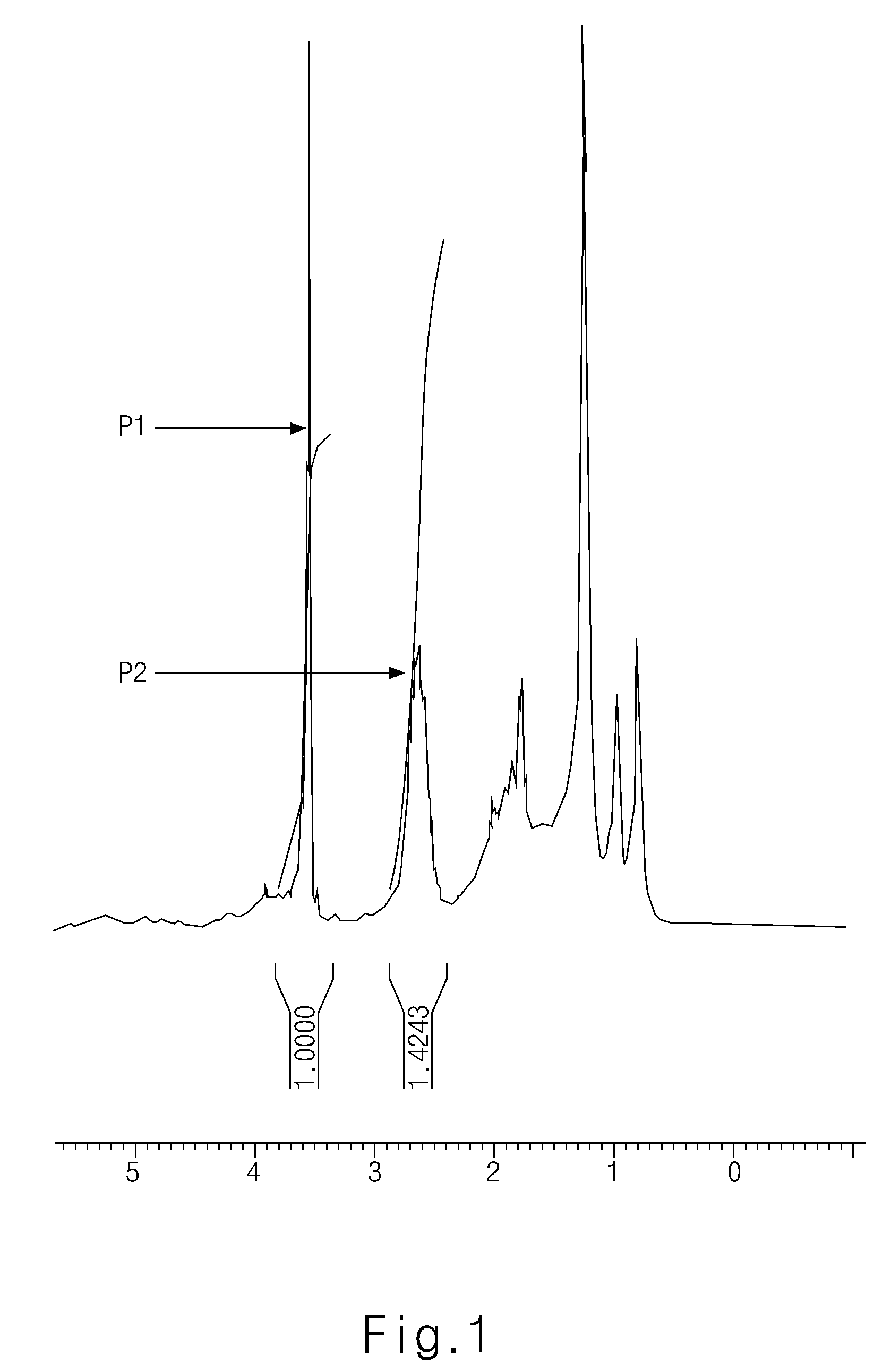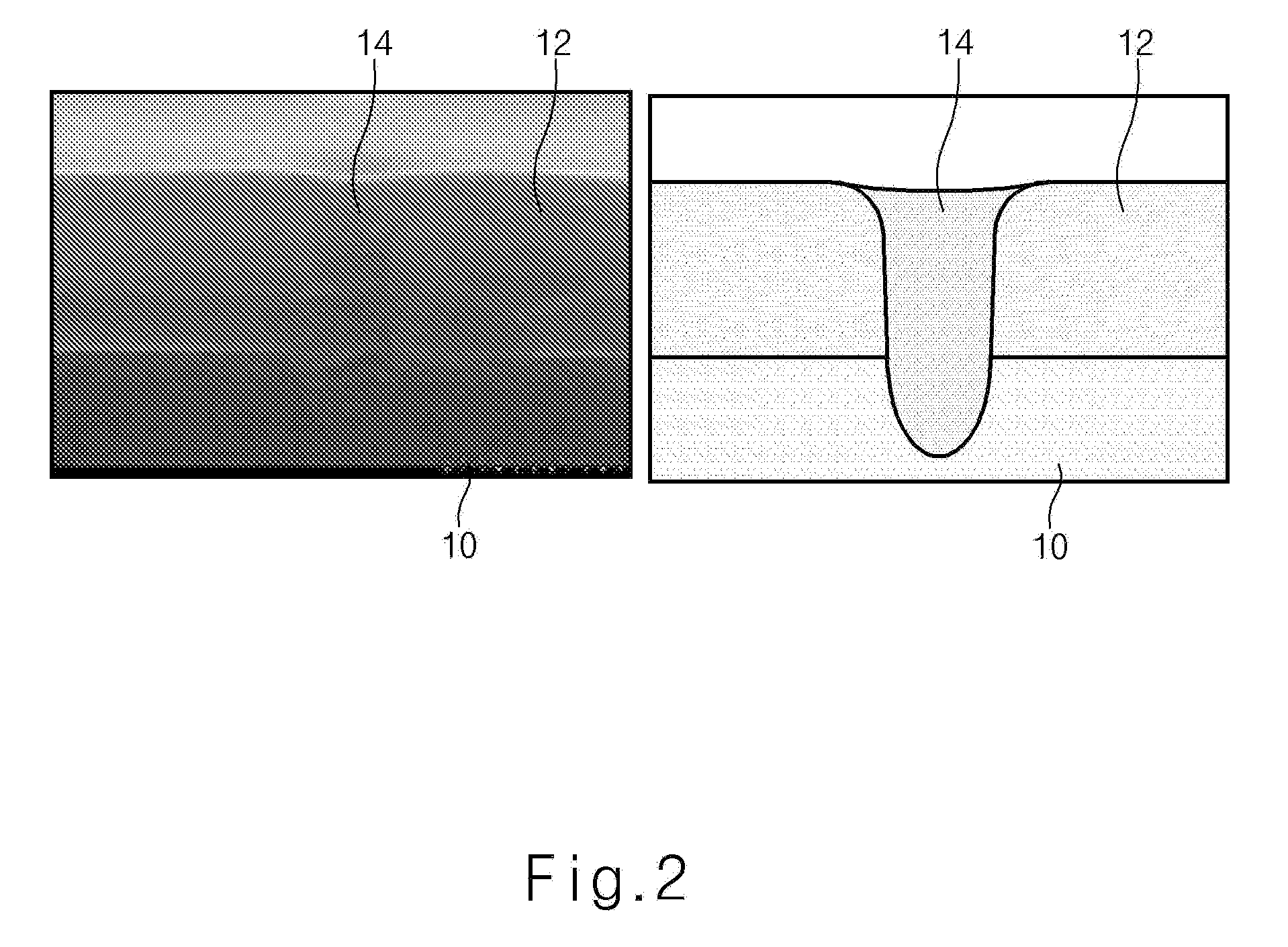Anti-reflective polymer, Anti-reflective composition containing the same, and method for forming pattern using the same
- Summary
- Abstract
- Description
- Claims
- Application Information
AI Technical Summary
Benefits of technology
Problems solved by technology
Method used
Image
Examples
example 1
Preparation of Polymer for Crosslinking
[0034]Methyl methacrylate (60 g), acrolein (40 g), AIBN (5 g), and PGMEA (400 g) were reacted at 80° C. for about 8 hours in a round bottom flask (500 ml). After reaction, the resulting mixture was precipitated in n-hexane (4 l) and dried in vacuum to obtain white powder (65 g). To the white powder, ethanethiol (300 g) and p-toluenesulfonic acid (0.5 g) were added and reacted at 32° C. for about 24 hours. After reaction, triethylamine (1 g) was added and stirred for about 30 minutes. After stirring, the resulting mixture was precipitated in distilled water to obtain a poly(methyl methacrylate / 3,3,-dithioethylpropene) polymer (40 g) (see FIG. 1). In FIG. 1, peak P1 is due to a H of methoxy group in poly(methyl methacrylate), and peak P2 is due to a CH2 attached to S of ethanethiol.
example 2
Preparation of Anti-Reflective Composition
[0035]The polymer (7 g) obtained from Example 1, polyvinylphenol resin (3 g) having a molecular weight of 2500, and 2-hydroxycyclohexyl p-toluenesulfonate (0.03 g) were dissolved in PGMEA (1500 g), and filtered through a 100 nm filter to obtain an anti-reflective composition.
example 3
Measurement of Refractive Index and Absorption Coefficient
[0036]The anti-reflective composition obtained from Example 2 was coated with 28 nm thickness over a silicon wafer, and baked at 220° C. for 60 seconds to form an anti-reflective film. Then, a refractive index (n) and an absorption coefficient (k) at 193 nm were measured with an ellipsometer. As a result, n=1.82 and k=0.22.
PUM
| Property | Measurement | Unit |
|---|---|---|
| Percent by mass | aaaaa | aaaaa |
| Percent by mass | aaaaa | aaaaa |
| Percent by mass | aaaaa | aaaaa |
Abstract
Description
Claims
Application Information
 Login to View More
Login to View More - R&D
- Intellectual Property
- Life Sciences
- Materials
- Tech Scout
- Unparalleled Data Quality
- Higher Quality Content
- 60% Fewer Hallucinations
Browse by: Latest US Patents, China's latest patents, Technical Efficacy Thesaurus, Application Domain, Technology Topic, Popular Technical Reports.
© 2025 PatSnap. All rights reserved.Legal|Privacy policy|Modern Slavery Act Transparency Statement|Sitemap|About US| Contact US: help@patsnap.com



